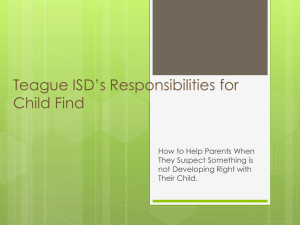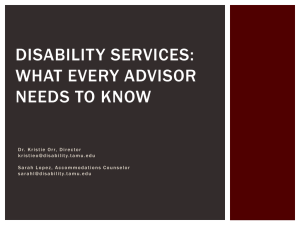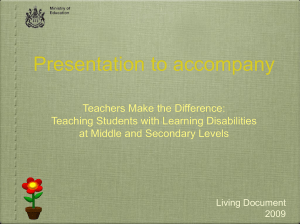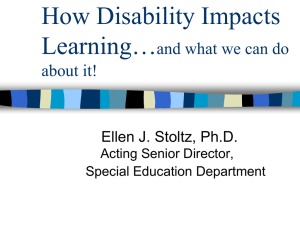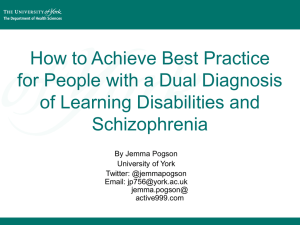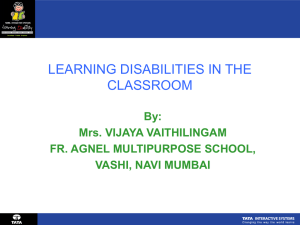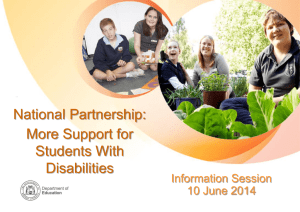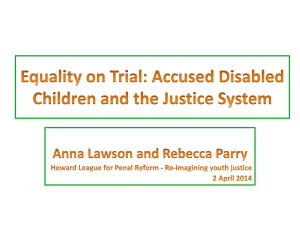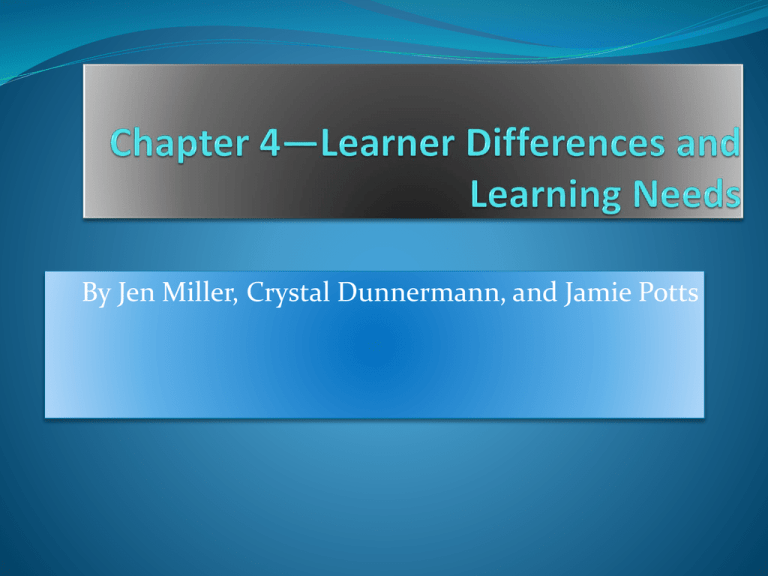
By Jen Miller, Crystal Dunnermann, and Jamie Potts
3 Themed of Intelligence
The capacity to Learn
Total Knowledge a person a person has acquired
The ability to adapt to successfully to new situations
and to the environment in general
Definitions
General Intelligence- used
to perform any mental test
Fluid Intelligence -mental
efficiency and reasoning.
May be related to changes
in brain volume, density of
dopamine receptors, or
processing abilities in the
prefrontal lobe of the brain
such selective attention
and working memory.
Crystallized Intelligence-
ability to apply the
problem solving methods
appropriate In your
cultural context.
Multiple Intelligences
Gardner’s Theory
Linguistic (Verbal)
Musical
Spatial
Logical- mathematical
Bodily-kinesthetic (movement)
Interpersonal (understanding other)
Intrapersonal (understanding self)
Naturalist (watching and understanding)
Natural and Human (made patterns and systems)
Logical mathematical
Usually a scientist or mathematician
Good at numerical patterns
Has ability to handle long chains of
reasoning
Linguistic
Usually a poet or a journalist
Great with sounds, rhythms and meanings of words
Sensitivity to the different functions of language
Musical
Composer or Violinists
Easy for them to create rhythm, pitch
Appreciates expressions though music
Spatial
Navigator or Violinists
They have more of an “out of the box” type of thinking
Able to perform transformations on one’s initial
perceptions
Bodily-kinesthetic
Dancer or Athlete
Able to control body movements
Handle objects skillfully
Interpersonal
Therapist or Salesmen
Comes easy to them to respond appropriately to moods,
temperament, motivations and desires of others
Intrapersonal
Person with detailed, accurate self-knowledge
Able to figure out their own feelings, motivations and
goals.
They seek understanding and learn best indendently
Naturalist
Farmer or Hunter
Have a sensitivity to nature
Gifted in nurturing and growing thing as well as caring
and interacting with animals
Sex Differences in Intelligence
Most studies find little differences between boys and
girls in overall mental and motor development from
infancy through the preschool years.
School years and on, there are no differences in general
intelligence in the standard measures.
But, by the end of grade school, females perform
better on assessments of verbal abilities when
assignments are on writing and topics that females are
familiar with.
Males, on the other hand, excel and are better at visual
measures.
Learning and Thinking Styles
Learning Styles- Characteristic approaches to learning
and studying
Thinking Styles –The preferred thinking approach
Learners use such as being inquisitive, analytical,
visual, spatial, or problem solvers.
3 Types of Learners
Cognitive Ability
High special ability –creating, remembering, and
manipulating images comes very easily.
2. Cognitive Style
Visualize- Uses images and visual info. to think
Verbalize-words and verbal info. are used to think
1.
3.
Cognitive Style
Visual learner-prefers pictures
Verbal learner- prefers using words
Individual Differences and The Law
IDEA: Individuals with Disabilities Education Act
Latest amendment of the PL 94-142; guarantees a free
public education to ALL children regardless of disability.
Requires states to provide a free, appropriate public
educations (FAPE)
FAPE- Public funding to support appropriate educations
programs for ALL students, No matter what their needs.
Disabilities in IDEA
Specific Learning disabilities
Speech/language impairments
Intellectual disabilities(mental retardation)
Emotional disturbances
Other health impairments (not orthopedic)
Multiple disabilities
Autism spectrum disorders
Orthopedic impairments
Hearing impairments
Developmental delay
Visual impairments
Traumatic brain injury
Deaf-blind
Individualized Education Program
(IEP)
Is an agreement between parents
and the school about the services
that will be provided to the student
Students with Learning Challenges
New technology has allowed for the amount of
research on the brain & learning disabilities to grow
substantially
Neuroscience and Learning Challenges
Early explanations for learning disabilities was
minimal brain dysfunction.
• Now know there are many other involved in learning
challenges including injuries and diseases of the brain.
• Research on learning problems has focused on
working memory because working memory capacity is
a good predictor of a range of cognitive skills including
language understanding, reading and mathematics
abilities, and fluid intelligence.
Students with learning disabilities
According to the text, the term learning disability does not have
a fully agreed upon definition.
Most definitions agree that students with learning disabilities
perform significantly below what would be expected, given their
abilities.
Educational psychologists suggest that there are both
physiological and environmental bases for learning disabilities,
such as brain injury, exposure to toxins before birth from
mothers who smoked or drank while pregnant, poor nutrition,
lead-based paint in the home, or even poor instruction.
Genetics plays a role as well. If parents have a learning disability,
their children have a 30%-50% chance of having a learning
disability as well.
Students Characteristics
Most common characteristics are specific difficulties in one
or more academic areas; poor coordination; problems
paying attention; hyperactivity and impulsivity; problems
organizing and interpreting visual and auditory
information; disorders of thinking, memory, speech, and
hearing; and difficulties making and keeping friends.
Most students with learning disabilities have difficulties
reading.
Math, both computation and problems solving, is the
second most common problem area for students.
Writing of some students is virtually unreadable , and their
spoken language can be halting and disorgenized.
Teaching Students with learning
Disabilities
Early diagnosis is important so that students with learning
disabilities do not become terribly frustrated and
discouraged. Students may become victims of learned
helplessness.
Learned helplessness is the expectation, based on previous
experiences with a lack of control, that all one’s efforts will
lead to failure.
Students with learning disabilities may also try to
compensate for their problems and develop bad learning
habits in the process, or they may begin avoiding certain
subjects out of fear of not being able to handle the work.
•Some general strategies for working with learning disabilities:
Preschool and elementary –Keep verbal instructions short and
simple; have students repeat directions back to you to be sure they
understand; give multiple example and repeat main points several
times; allow more practice than usual , especially when material is
new. Secondary- In addition to the above, directly teach older
students self-monitoring strategies such as cueing students to ask,
"was I paying attention?”. Teach students to use external memory
strategies such as note-taking, and devices such as assignment
book, to-do lists, or electronic calendars.
Students with Hyperactivity and
attention disorders
Attention-deficit hyperactivity disorder(ADHD) is a currents term for
disruptive behavior disorders marked by over activity, excessive difficulty
sustaining attention, or impulsiveness. Children with ADHD are not only more
physically active and inattentive than other children, they also have more
difficulty responding appropriately and working steadily toward goals.
There is a reliance on drug therapy to improvements in academic learning or
peer relationships.
Teachers can assign a few problems or paragraphs at a time with clear
consequences for completion instead of long assignments that are
overwhelming. The notion of being in control is also part of a therapy strategy.
Enlists the child’s to conquer the problem. Remember SMART:
Separating the problems of ADHD from the child
Mapping influence of ADHD on the child and family
Attending to the exceptions to ADHD story
Reclaiming special abilities of children diagnosed with ADHD
Telling and celebrating the new story
Students with language and
communication disorders
Students with communication disorders arte the second largest group served
be special education. Language disorders have many sources: hearing
impairments, injuries, children who ate not listened to or whose perception of
the world is distorted by problems, impairment of motor functions, and
problems in cognitive function.
Students who cannot produce sounds effectively for speaking are considered to
have speech disorders
Articulation disorders include any variety of pronunciation difficulties, such as
the substitution, distortion of sounds.
Cause of stuttering are unclear but may include emotional or neurological
problems or learned behaviors.
Voicing problems are inappropriate pitch, quality , loudness, or intonation.
A students with any of these problems should be referred to a speech therapist.
Also students who seldom speak, who use few words or very short sentences, or
who rely only on gestures to communicate should be referred for observation or
testing.
Students with Emotional or behavioral
difficulties
Emotional and behavioral disorders are behavior or emotions the
deviate so much from the norm that they interfere with the child’s own
growth and development and/or the lives of others – inappropriate
behaviors, unhappiness or depression, fears and anxieties, and trouble
with relationships. Examples are: OCD, PTSD, eating disorders, mood
disorders, tic disorders and disruptive behavior disorders. This group is
the 4th largest receiving services. Methods from applied behavioral
analysis and direct teaching self-regulation skills are two useful
approaches. Also provide structure, organizational tools, and choices
Suicide is something that is attempted by up to 10% of adolescents and
more have considered it . There are four general rick factors, and they
seem to adolescents: depression and substance abuse, history of
suicide in the family, being under stress, and family rejection or
conflict. There is also concern today some drugs prescribed for
depression or ADHD may increase the rick of suicide.
Students with Intellectual disabilities
Intellectual disability is a more current name for mental retardation.
This is a disability characterized by significant limitations in both
intellectual functioning and adaptive behavior as expressed in
conceptual, social, and practical adaptive skills before age of 18.
The American Association on intellectual and Developmental
Disabilities (AAIDD)now recommends a classification scheme based
on the amount of support that a person requires to function at their
highest level. Support varies from intermittent (need during stressful
times), to extensive(daily care such as living in a group home)to
pervasive (constant high-intensity care for all aspects of living ).
Transition programming is the gradual preparation of students with
special needs to move from high school into education or training,
employment, or community involvement. An ITP, individualized
transition plan, may be part of the IEP for students with intellectual
disabilities.
Students with Health Impairments
Health impairment include: cerebral palsy, seizure disorders, asthma,
HIV/AIDS, diabetes and visual impairments.
Cerebral palsy is condition involving a range of motor or coordination
difficulties due to brain damage. This is characterized be spasticity, the
overly tight or tense muscles.
A seizure is a cluster of behaviors that occurs in response to abnormal
neurochemical activities in the brain. Epilepsy is a disorder marked by
seizures and caused by abnormal electrical discharged in the brain.
Generalized seizures (grand mal)is a seizure involving a large portion
of the brain. Absence seizures (petit mal)is a seizure involving only a
part of the brain that causes a child to lose contact briefly.
Low vision is vision limited to close objects. This includes a small group
of students whose vision impairments are so serious that special
educational services are needed. Educationally blind refers to students
needing Braille material in order to learn.
Autism Spectrum disorders and Asperser
syndrome
Autism /Autism spectrum disorders is a developmental disability
significantly affecting verbal and nonverbal communication and
social interaction, generally evident before age 3 and ranging
from mild major.
Children with ASD may have difficulties in social relations, avoid
eye contact, communication is impaired, they may obsessively
insist on regularity. Children may also be sensitive to light,
sound, tough or other sensory information.
Asperser syndrome have many of the characteristics but they
have the greatest trouble with social relations. Language is less
affected.
Early and intense interventions that focus on communications
and social relations are particularly important for children with
ASD.
Response to Intervention(RTI)
Response to intervention is a process to make sure students
get appropriate research-based instruction and support as
soon as possible and that teachers are systematic in
documenting what interventions they have tried with these
students so that information can be used in planning.
A three-tiered system is used to accomplish this. The first
tier is to use a strong, well-researched way of teaching all
students. If a child does not so well they are moved to the
second tier. They extra support and additional small-group
instruction. The third tier is one-to-one intensive help and
perhaps a special needs assessment.
Students who are gifted and talented
Another group with special needs that is often overlooked are gifted
and talented students . These students arte very bright, creative, and
talented. Truly gifted children are not the students who simply learn
quickly with little effort. The work of gifted students is original,
extremely advanced for their age, and potentially of lasting
importance.
Special efforts should be made to support underrepresented gifted
students which are girls, students who also have learning disabilities
and children living in poverty.
Truly gifted students who are accelerated do as well as, and usually
better than, non-gifted students who are progressing at the normal
pace. Gifted students tend to prefer the company of older playmates
and may be bored if kept with children their own age. Skipping grades
may not be he best solution for a particular students, but f0r students
who are extremely advanced intellectually, the only practical may be to
accelerate their education.
Diversity and convergences in learning
abilities
Even though there are many good tests and careful
procedures for making special education placement
decisions, racial and ethnic minority students are
overrepresented in the disability categories and
underrepresented in gifted programs.

